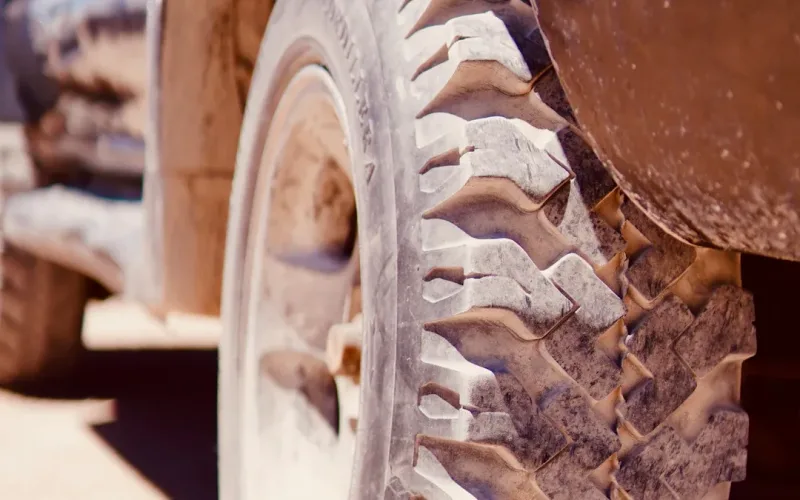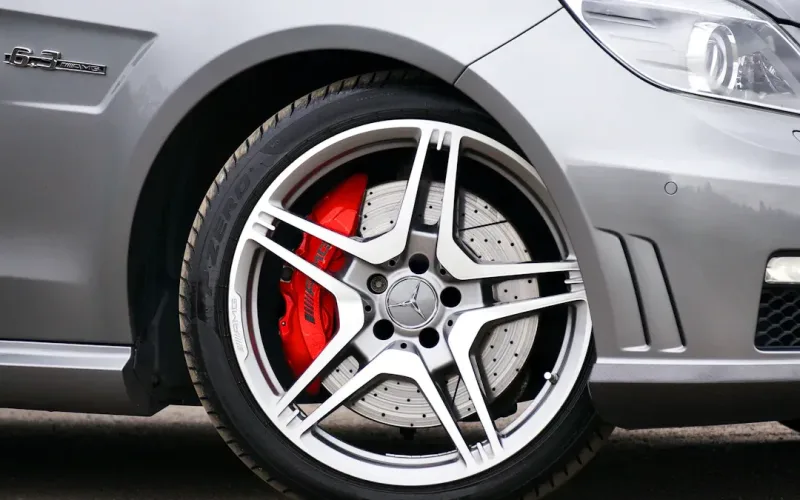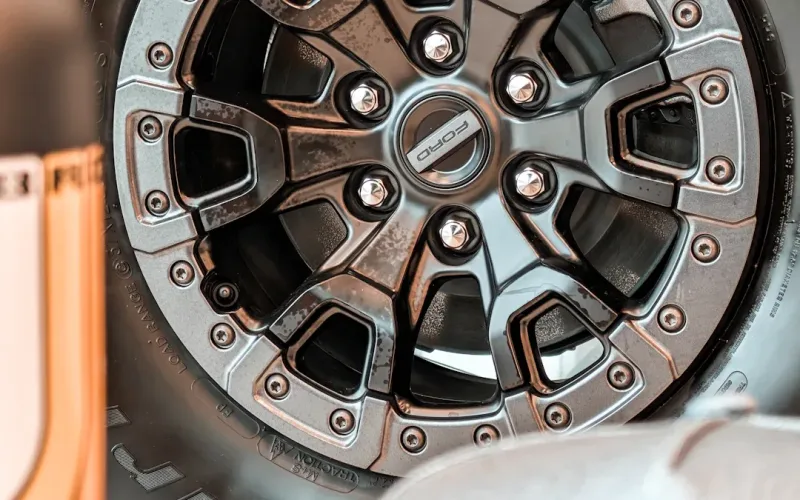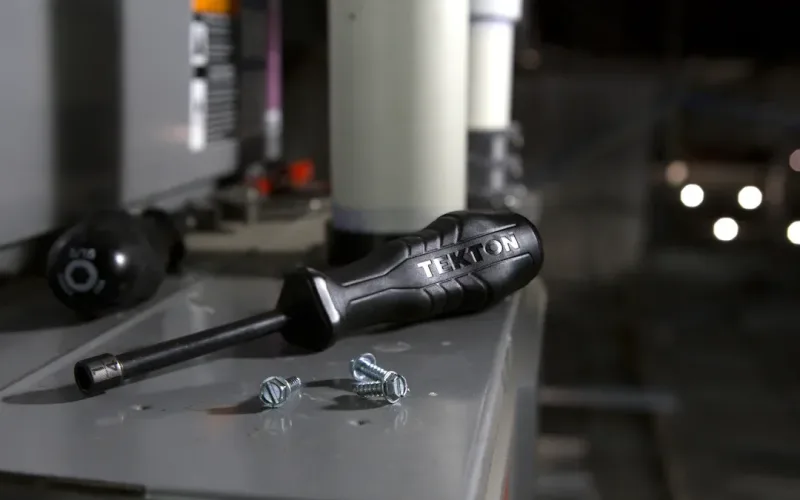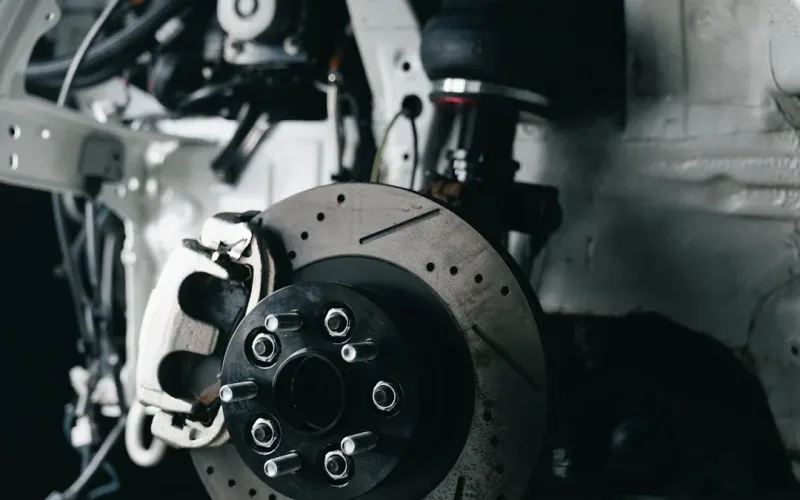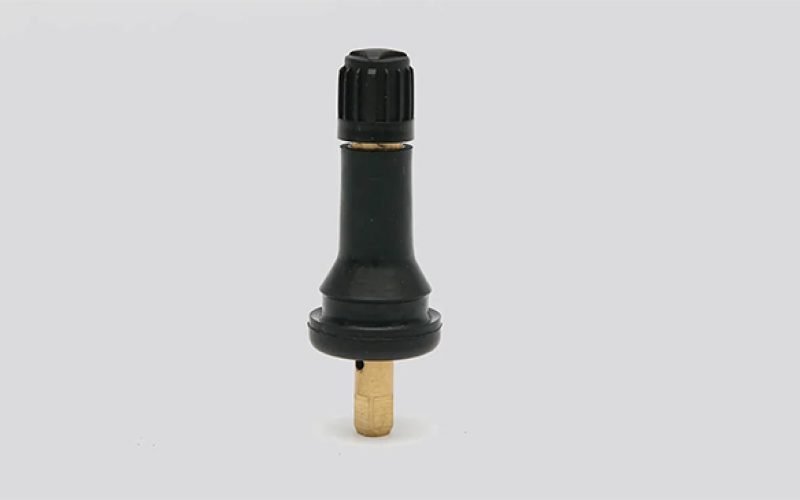

admin1
September 14, 2025
Discover 5 Tire Pressure Valve Stem Surprises for SUVs
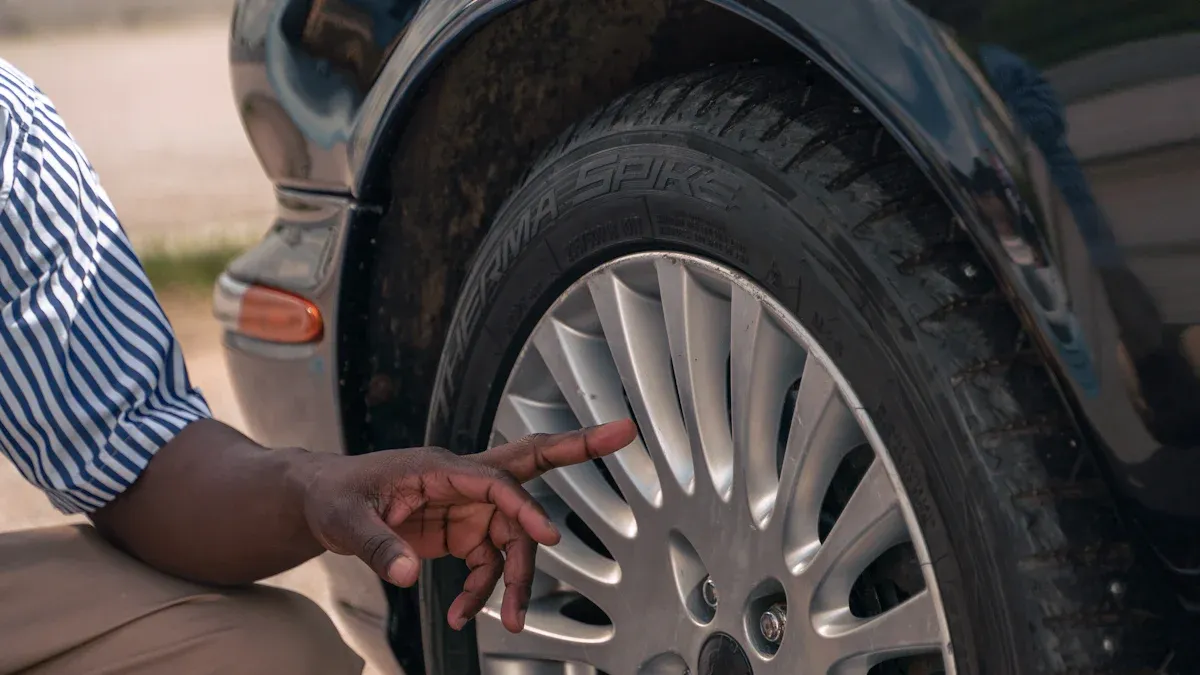
You might think all tire pressure valve stem options look the same, but that’s not true for SUVs. Some valve stems handle higher pressure, resist corrosion, or even help you check air levels faster. These features matter because SUVs often face tougher conditions than regular passenger vehicles. If you pick the right valve stem for your vehicles, you can drive safer, enjoy better performance, and save time during routine checks.
Tire Pressure Valve Stem Quick Comparison Table
Top 5 Tire Valve Stem Types for SUVs
When you look at all the options for your SUV, you might feel a bit overwhelmed. Each tire valve stem has its own strengths. Some work better for high-pressure needs, while others fit standard wheels. Here are the top five tire valve stem types you’ll see most often on SUVs:
- Snap-In High-Pressure Valve Stem (600HP, 602HP)
- Metal Clamp-In Valve Stem (801HP, 802HP)
- Standard Rubber Valve Stem (412, 413, 414, 415, 418, 423)
- TPMS-Compatible Valve Stem
- Easy-Check Indicator Valve Stem
You want to make sure you pick the right fitment for your wheels. The right choice helps your vehicles stay safe and perform well, whether you drive on highways or rough roads.
Key Specs and Unique Benefits
Let’s break down the main specs and benefits. This table shows you how each tire valve stem stands out. You can see the max inflation pressure, length, and the hole size needed for fitment. These details help you match the right stem to your SUV’s wheels.
| Valve Type | Max Inflation Pressure (PSI) | Effective Length (Inch) | Hole Diameter in Wheel (Inch) |
|---|---|---|---|
| 600HP | 80 | 1.27 | 0.453 |
| 602HP | 80 | 2.00 | 0.453 |
| 801HP | 100 | 1.31 | 0.625 |
| 802HP | 100 | 2.00 | 0.625 |
| 412 | 65 | 0.88 | 0.453 |
| 413 | 65 | 1.25 | 0.453 |
| 414 | 65 | 1.50 | 0.453 |
| 415 | 65 | 1.75 | 0.453 |
| 418 | 65 | 2.00 | 0.453 |
| 423 | 65 | 2.50 | 0.453 |
| 415 | 65 | 1.25 | 0.625 |
| 425 | 65 | 2.00 | 0.625 |
Tip: Always check your wheel’s hole diameter before you buy a new tire valve stem. This makes sure you get the best fitment and avoid leaks.
You can also see the differences in this chart. It compares max inflation pressure, length, and hole size for the most popular SUV tire valve stems:

Choosing the right tire valve stem keeps your vehicles running smoothly. It also helps you handle heavy loads or off-road trips with confidence.
Deep Dive: 5 Tire Valve Stem Surprises for SUVs
Snap-In High-Pressure Tire Valve Stem
You might think all tire valve stems work the same, but snap-in high-pressure tire valve stems bring some real surprises for SUV owners. These stems are built for vehicles that need more than 65 psi, which is much higher than what you see in most passenger cars. If you drive a medium- or heavy-duty SUV, you’ll want to know about these.
Snap-in high-pressure valve stems come in two rim hole sizes. Some can handle up to 80 psi, while others go all the way to 100 psi. That’s a big deal if you carry heavy loads or drive off-road. The thick rubber base and metal barrel make these stems tough and long-lasting. You get a secure fit, which means less chance of air leaks.
Here’s why you might love high-pressure snap-in valves for your SUV:
- You can install them quickly without special tools.
- The rubber base gives a tight seal, so you keep the right tire pressure.
- They make tire checks and maintenance much easier.
Let’s see how snap-in high-pressure tire valve stems compare to standard ones:
| Feature | Snap-In High-Pressure Valve Stems | Standard Valve Stems |
|---|---|---|
| Material | Rubber with metal barrel | Varies (often metal) |
| Installation | Easy, snaps into place | May require tools |
| Flexibility | High, handles minor impacts | Lower |
| Pressure Rating | Up to 100 PSI | Usually up to 65 PSI |
| Common Use | SUVs, heavy vehicles | Passenger cars |
If you want a tire pressure valve stem that stands up to tough conditions, high-pressure snap-in valves are a smart pick.
High-Pressure Metal Clamp-In Valves
When you need even more strength and durability, high-pressure metal clamp-in valves step up. These are the go-to choice for many SUV owners who drive in extreme conditions or haul heavy trailers. You get a metal stem that clamps tightly to the wheel, which means it can handle higher pressures and rougher roads.
High-pressure metal clamp-in valves are perfect for off-road adventures. The metal construction resists bending and damage from rocks or debris. You also get a better seal, which helps keep your tires at the right pressure for longer. If you often drive with a full load or tow a camper, these valves give you extra peace of mind.
Here’s what makes high-pressure metal clamp-in valves stand out:
- They handle higher pressures than most rubber stems.
- The clamp-in design keeps the valve secure, even on bumpy roads.
- Metal stems resist corrosion and last longer in harsh weather.
You might see these called high-pressure metal stems, and they’re a favorite for anyone who wants top-level performance from their tire valve stem.
Tip: If you drive in areas with lots of rain or snow, metal clamp-in valves can help prevent rust and leaks.
TPMS-Compatible Tire Valve Stem
Modern SUVs often come with tire pressure monitoring systems. These systems warn you if your tire pressure drops too low. To keep your TPMS working right, you need a tire valve stem that’s compatible with these sensors.
TPMS-compatible tire valve stems are designed to fit perfectly with the sensors inside your tire. You won’t have to worry about false alarms or sensor damage. These stems also make it easier to check and adjust your tire pressure, so you stay safe on the road.
Here’s why you should look for a TPMS-compatible tire pressure valve stem:
- It works smoothly with your SUV’s tire pressure monitoring systems.
- You get accurate readings and fewer warning lights.
- The design helps protect the sensor from dirt and moisture.
If you want to keep your SUV’s safety features working their best, always choose a tire valve stem that matches your TPMS.
Anti-Corrosion Coated Tire Valve Stem
You know how tough the road can get, especially if you drive your SUV through rain, snow, or salty roads. Moisture and road salt can eat away at metal parts. That’s where anti-corrosion coated tire valve stems come in. These valve stems have a special coating that protects the metal from rust and corrosion. You get longer life from your valve stems, and you avoid annoying air leaks.
Why should you care about anti-corrosion coatings?
Corrosion can sneak up on you. It starts small, but over time, it can weaken the valve stem. If the stem fails, you could lose tire pressure fast. That means more trips to the tire shop, or worse, a flat tire on the highway. Anti-corrosion coatings help you avoid these problems.
Here’s what makes anti-corrosion coated valve stems a smart choice for your SUV:
- Longer lifespan: The coating keeps rust away, so your valve stems last longer.
- Better air retention: No rust means a tighter seal and fewer leaks.
- Less maintenance: You spend less time checking and replacing valve stems.
- Great for all climates: These stems work well in wet, snowy, or coastal areas.
Tip: If you live near the ocean or in a place with lots of snow and road salt, anti-corrosion coated valve stems are a must-have for your SUV.
Let’s look at a quick comparison:
| Feature | Standard Valve Stem | Anti-Corrosion Coated Valve Stem |
|---|---|---|
| Rust Resistance | Low | High |
| Lifespan | 1-2 years | 3-5 years |
| Maintenance Needed | Frequent | Minimal |
| Best For | Mild climates | All climates |
You want your SUV to be ready for anything. Anti-corrosion coated valve stems give you peace of mind, no matter where you drive.
Easy-Check Indicator Tire Valve Stem
Have you ever wondered if your tires are low on air, but you don’t want to get out the gauge? Easy-check indicator tire valve stems make your life simpler. These valve stems have a built-in indicator that shows you if your tire pressure drops below a safe level. You just look at the color on the valve cap—no tools needed.
How does it work?
The indicator uses a color system. Green means your tire pressure is good. Yellow warns you that the pressure is getting low. Red means you need to add air right away. You can spot a problem before it gets serious.
Here’s why you’ll love easy-check indicator valve stems:
- Instant feedback: You see tire pressure status at a glance.
- No special tools: You don’t need a gauge or sensor reader.
- Safer driving: You catch low pressure before it causes trouble.
- Great for families: Anyone can check the tires, even kids.
Note: Easy-check indicator valve stems work best when you set them for your SUV’s recommended tire pressure. Always check your owner’s manual for the right PSI.
Here’s a quick guide to what the colors mean:
| Indicator Color | Tire Pressure Status | What You Should Do |
|---|---|---|
| Green | Pressure is just right | Keep driving |
| Yellow | Pressure is a bit low | Check and add air soon |
| Red | Pressure is too low | Add air immediately |
You don’t have to guess anymore. With easy-check indicator valve stems, you keep your SUV safe and ready for the road—one quick glance at a time.
How Tire Valve Stem Types Impact SUV Safety and Performance
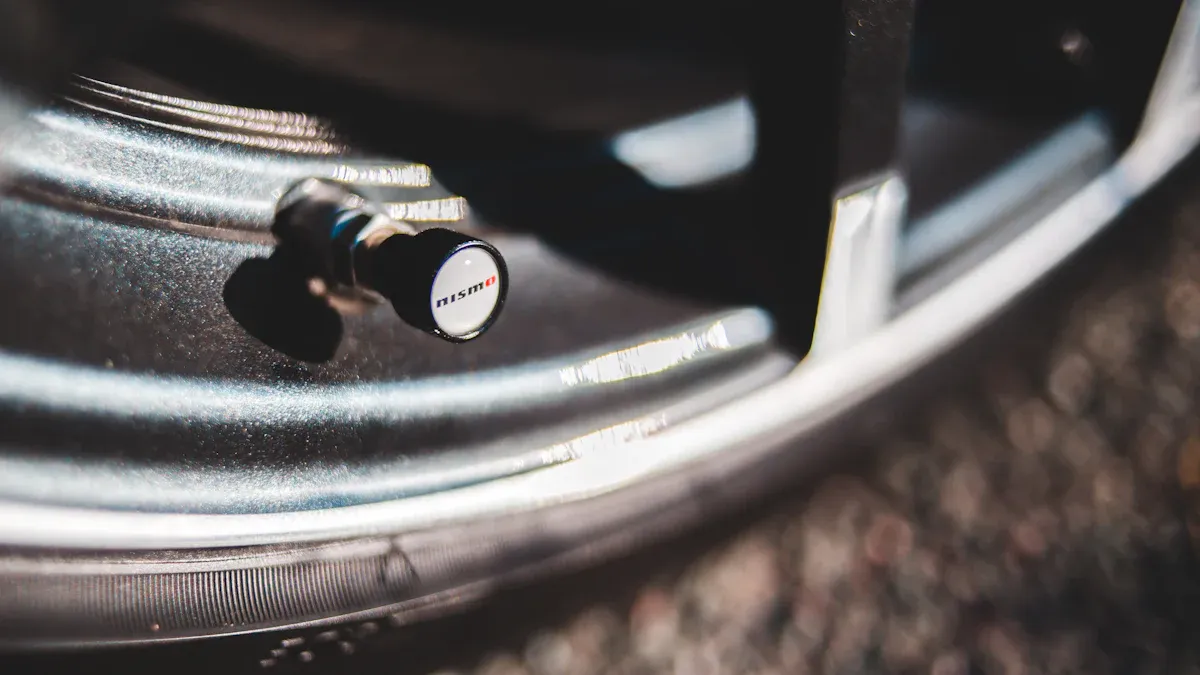
Tire Longevity and Air Retention
You want your tires to last as long as possible. The right tire valve stem helps you keep the correct tire inflation pressure, which means your tires wear evenly. When you use a high-quality stem, you hold air better and avoid slow leaks. This is important for all vehicles, but it matters even more for SUVs and trucks that carry heavy loads or travel long distances.
If you drive passenger vehicles, you might not think about the valve stem much. But a faulty stem can let air escape. Over time, this causes uneven tread wear and shortens the life of your tires. Trucks and SUVs need strong stems because they often run at higher tire inflation pressure. You get more miles out of your tires when you check your stems and replace them if they look worn.
Tip: Check your tire pressure valve stem every time you inspect your tires. A quick look can save you from a flat on the road.
Driving Safety and Stability
Your safety depends on good tire pressure. The tire valve stem plays a big part in this. If your stem leaks, you lose air fast. This can make your SUV or truck hard to control, especially at high speeds. Passenger vehicles also face this risk, but heavier vehicles need even more care.
Tire pressure monitoring systems help you stay safe. These systems use sensors that connect to the valve stem. They watch your tire pressure and warn you if something is wrong. Here are some ways these systems and stems keep you safe:
- TPMS sensors give you real-time alerts if your tire pressure drops.
- External sensors mount on the tire valve stem and check pressure all the time.
- These alerts help you avoid accidents caused by low tire pressure.
Recent reports show that up to 30 million vehicles in the U.S. had faulty stems installed between 2006 and 2007. Many drivers reported cracked stems and air leaks. Some even had blowouts or flats within a year. You do not want to risk your safety with a bad stem.
Off-Road and Heavy Load Performance
SUVs and trucks often go off-road or carry heavy loads. You need a tire valve stem that can handle these tough jobs. Off-road driving puts extra stress on your tires and stems. Rocks, mud, and bumps can damage weak stems. Heavy loads also raise the tire inflation pressure, so you need a stem that will not fail.
Passenger vehicles do not face these challenges as often. But if you use your SUV or truck for work or adventure, pick a stem made for high pressure and rough roads. Metal clamp-in stems or anti-corrosion coated stems work well in these cases. They keep your tires sealed and safe, even when the road gets rough.
Note: Always match your tire valve stem to your driving style and the type of vehicle you own. This helps you avoid problems and keeps your ride smooth.
Tire Valve Stem Guide: Choosing the Right Option for Your SUV
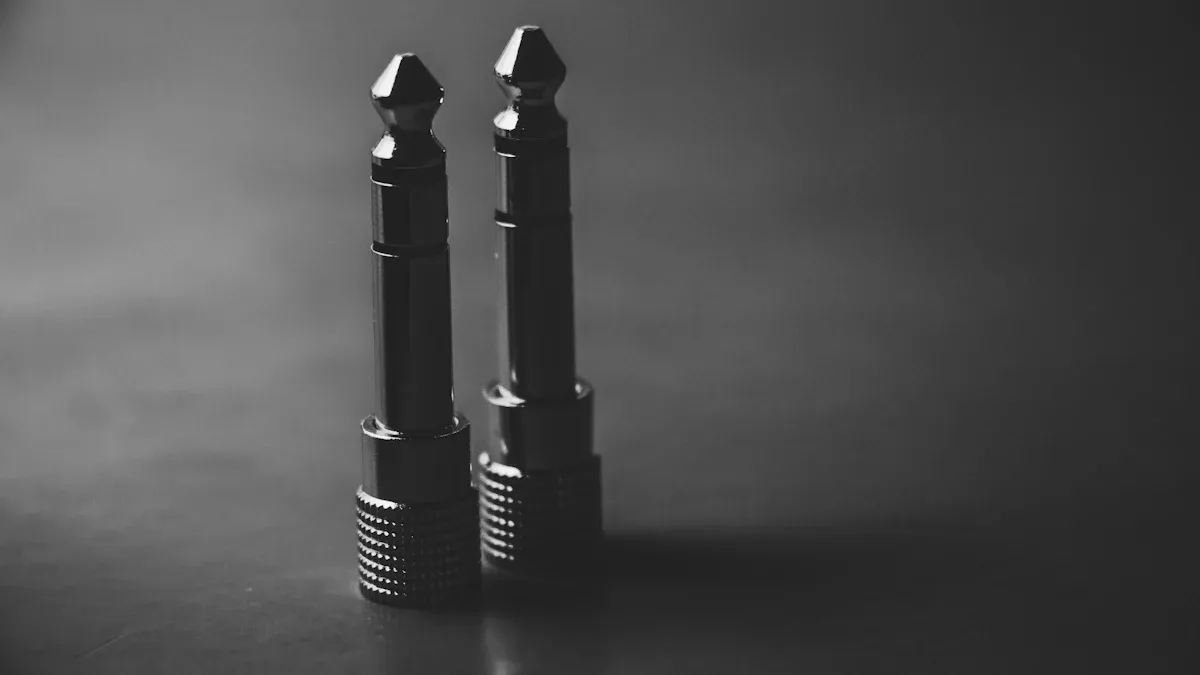
Compatibility with Tire and Wheel Type
You want your tire valve stem to fit your SUV perfectly. Not all vehicles use the same size or style. Some trucks and SUVs need longer stems or higher pressure ratings than passenger vehicles. Picking the right fit helps you avoid leaks and keeps your tires working well.
Check out this table to see what you should look for:
| Factor | Description |
|---|---|
| Valve Stem Lengths | Varies by vehicle type; SUV owners need to choose appropriate lengths. |
| Stem Angles | Options include straight and angled; affects accessibility for inflation. |
| Pressure Ratings | Must match vehicle requirements; SUVs may need higher ratings than cars. |
| Rim Hole Diameters | Diameter must fit the valve stem; SUVs typically require larger diameters. |
If you drive trucks or SUVs, you often need a larger rim hole diameter and a higher pressure rating. Passenger vehicles usually use shorter stems and lower pressure. Always double-check your wheel and tire specs before you buy. This way, you get a proper fit and avoid problems down the road.
Durability, Material, and Quality Considerations
You want your tire valve stem to last. Materials matter a lot. Rubber stems can dry out and crack, especially in hot or cold weather. Over time, moisture and road salt can cause metal parts to rust. This leads to leaks and poor tire performance.
Tip: High-quality stems that meet SAE 1205-1206 ozone requirements last longer and work better in all conditions.
If you use low-quality stems, you might see them become brittle in just two years. That means more trips to the shop and less time on the road. Choose stems made from strong rubber or corrosion-resistant metal. This keeps your vehicles, including trucks and passenger vehicles, safe and ready for any weather.
Price, Value, and Brand Reputation
You might want to save money, but cheap stems can cost you more in the long run. Look for brands with a good reputation. They test their products and use better materials. You get more value and fewer headaches.
A trusted tire valve stem guide will help you compare prices and features. Think about what you need for your vehicles. The right fit, strong materials, and a reliable brand give you peace of mind every time you drive.
Installation and Maintenance Tips
Getting your tire valve stem installation right makes a big difference for your SUV. You want to avoid leaks and keep your tires safe. Here are some installation tips to help you get started:
- Clean the rim hole before you install the valve stem. Dirt or old rubber can stop the stem from sealing well.
- Use a valve stem tool to pull the stem through the rim. This helps you get a tight fit.
- Check the stem for cracks or damage before installation. A damaged stem can cause air leaks.
- Make sure the stem sits straight in the rim hole. If it tilts, you might see slow leaks later.
If you’re not sure about installation, ask a tire shop for help. They have the right tools and experience.
Maintenance keeps your tire valve stems working their best. You should check the stems every time you inspect your tires. Look for cracks, splits, or signs of aging. If you see any problems, replace the stem right away.
Here’s a quick guide for when to replace your tire valve stems:
| Maintenance Interval | Recommendation |
|---|---|
| New Tires | Replace valve stems every time new tires are installed |
| General Lifespan | Replace every 4 to 6 years |
| Environmental Factors | Replace sooner in extreme conditions (harsh winters, extreme heat) |
You want your SUV ready for any road. If you drive in tough weather or off-road, check your valve stems more often. Moisture, salt, and heat can wear out stems faster.
Tip: Always use high-quality stems for installation. They last longer and help your tires hold air better.
Regular checks and smart installation keep your SUV safe and your tires in top shape. You save money and avoid trouble down the road.
You’ve just learned about five surprising tire pressure valve stem features that can make a big difference for your SUV. Trucks and passenger vehicles need strong stems for safety and better air retention. Tire pressure monitoring systems help you spot problems fast, even on trucks or passenger vehicles. If you want your vehicles to stay safe and reliable, check your stems often. Upgrading can boost performance and keep your tire pressure monitoring systems working right.
FAQ
What happens if you use the wrong tire valve stem on your SUV?
You might see air leaks or poor tire pressure. The wrong stem can cause faster tire wear. Your SUV may not handle well. Always match the valve stem to your wheel size and pressure needs.
How often should you replace tire valve stems on an SUV?
You should replace valve stems every time you get new tires. Most experts recommend changing them every 4 to 6 years. If you drive in harsh weather, check them more often for cracks or damage.
Can you install tire valve stems at home?
Yes, you can install snap-in valve stems with basic tools. Metal clamp-in stems may need special equipment. If you feel unsure, ask a tire shop for help. Proper installation keeps your tires safe.
Do tire valve stems affect fuel efficiency?
Yes, they do. A good valve stem keeps your tire pressure steady. Low tire pressure makes your SUV use more fuel. Check your valve stems often to help save gas and keep your ride smooth.
